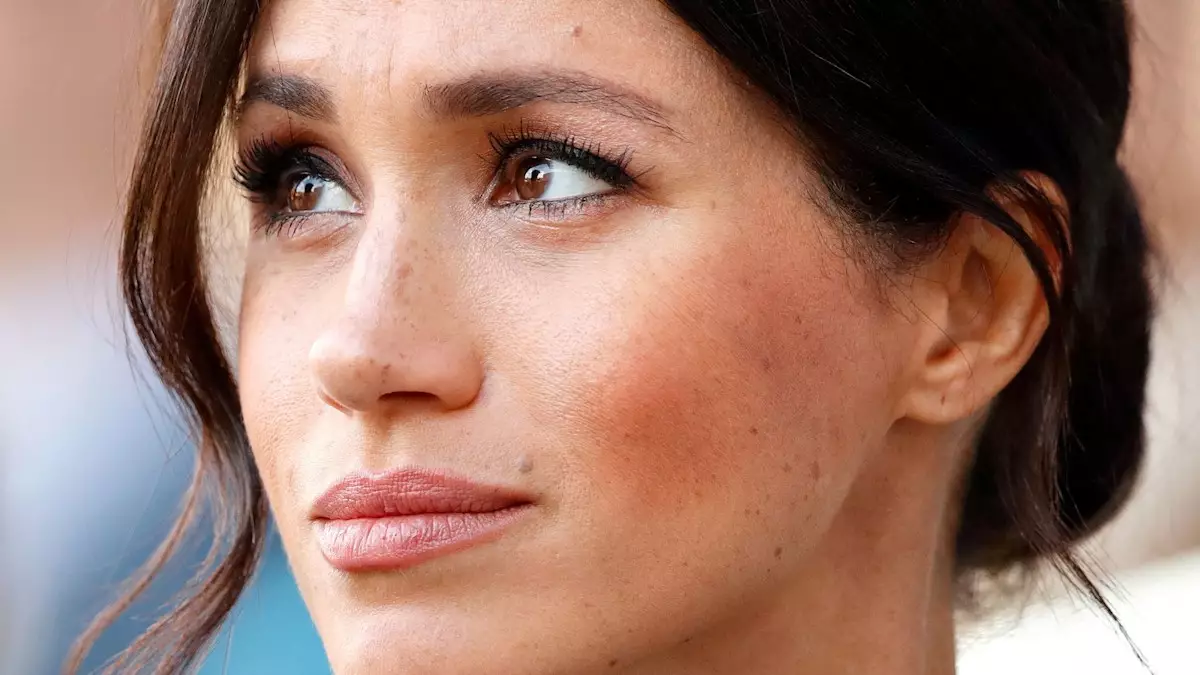The complexities surrounding Meghan Markle’s entry into British royalty have captivated public interest since her marriage to Prince Harry in 2018. The narrative has often hinged on the juxtaposition of her American upbringing against the deeply entrenched traditions of the British monarchy. In a revealing exploration by author Tom Quinn, titled *Yes Ma’am: The Secret Life of Royal Servants*, new insights into Meghan’s experiences highlight the tension between modernity and tradition, charisma, and the perception of aristocracy.
Marrying into the British royal family positioned Meghan in an exceptionally challenging environment. This unique status immediately demanded her compliance with centuries-old customs and expectations. According to Quinn, Meghan faced skepticism from palace elites, who may have viewed her through the lens of their own traditional backgrounds. “Some people can cope with this — Kate Middleton is perhaps the supreme example,” Quinn writes, suggesting that not everyone acclimates seamlessly.
Meghan’s admission during her engagement interview, where she stated she had little knowledge of the royal family prior to her relationship with Harry, further illustrates her outsider status. This lack of awareness purportedly contributed to her feeling like an outsider—a sentiment echoed by former staff who characterized her as a “fighter.” While others like Kate seem to have adapted effortlessly, Meghan’s confrontations with royal norms sparked tension that left her feeling stifled.
Quinn posits that Meghan is inherently a “modernizer,” intent on challenging and redefining the archaic protocols surrounding the royal family. The book claims that her desire for action and change often put her at odds with the institutionalized rigidity that defined palace operations. The sentiment of being constrained by protocol was palpable, leading to a clash between her progressive ideals and the royal family’s conservative structure.
Several royal aides described Meghan as both straightforward and pragmatic—a stark contrast to the seemingly genteel demeanor of her older counterparts. Reports indicate that her attempts to instill change were met with hostility from veteran staff entrenched in tradition. One former adviser commented that “they [the older, public school-educated advisers] really had it in for Meghan.” In this way, Meghan became emblematic of a struggle to modernize a world that seemed ill-equipped for her vision.
His royal connections aside, Harry was also entrenched in his own conflicting experiences as a member of the royal family. While he was labeled as one of the “easiest and nicest” royals to work for, his temper was tested on multiple occasions, revealing the pressure even he faced within the confines of palace life. Such anecdotes underscore the broader narrative of difficulty and frustration that characterize life in the royal spotlight.
Even as they took steps back from their roles as senior royals, Meghan and Harry’s candid discussions regarding their mental health struggles and tumultuous relationships with the royal family further expose the challenges that come with their elevated status. The sheer weight of royal expectations and duties—compounded by Meghan’s desire for agency—created a growing rift that the couple found increasingly burdensome.
Adding a layer of absurdity to this already complicated political landscape, *Yes Ma’am* reveals various instances of royal behaviors that are as surprising as they are telling. Allegations of tantrums and unexpected criticisms from various members of the royal family—including Prince Charles’s and Prince William’s flashes of irritation—illustrate a culture where emotional expressions are permissible, but that emotional intelligence seems often lacking.
The release of Tom Quinn’s *Yes Ma’am* serves as a vivid portrayal of not just Meghan Markle’s struggles, but also of the monarchy’s internal culture. While some may characterize her as a disruptor, the reality likely lies more in her attempts to adapt and assert herself within a system resistant to change. As the public becomes increasingly aware of the complexities behind royal walls, Meghan’s narrative is not merely that of a fighter; it is also of a voice struggling for modern recognition in an age-old institution.

